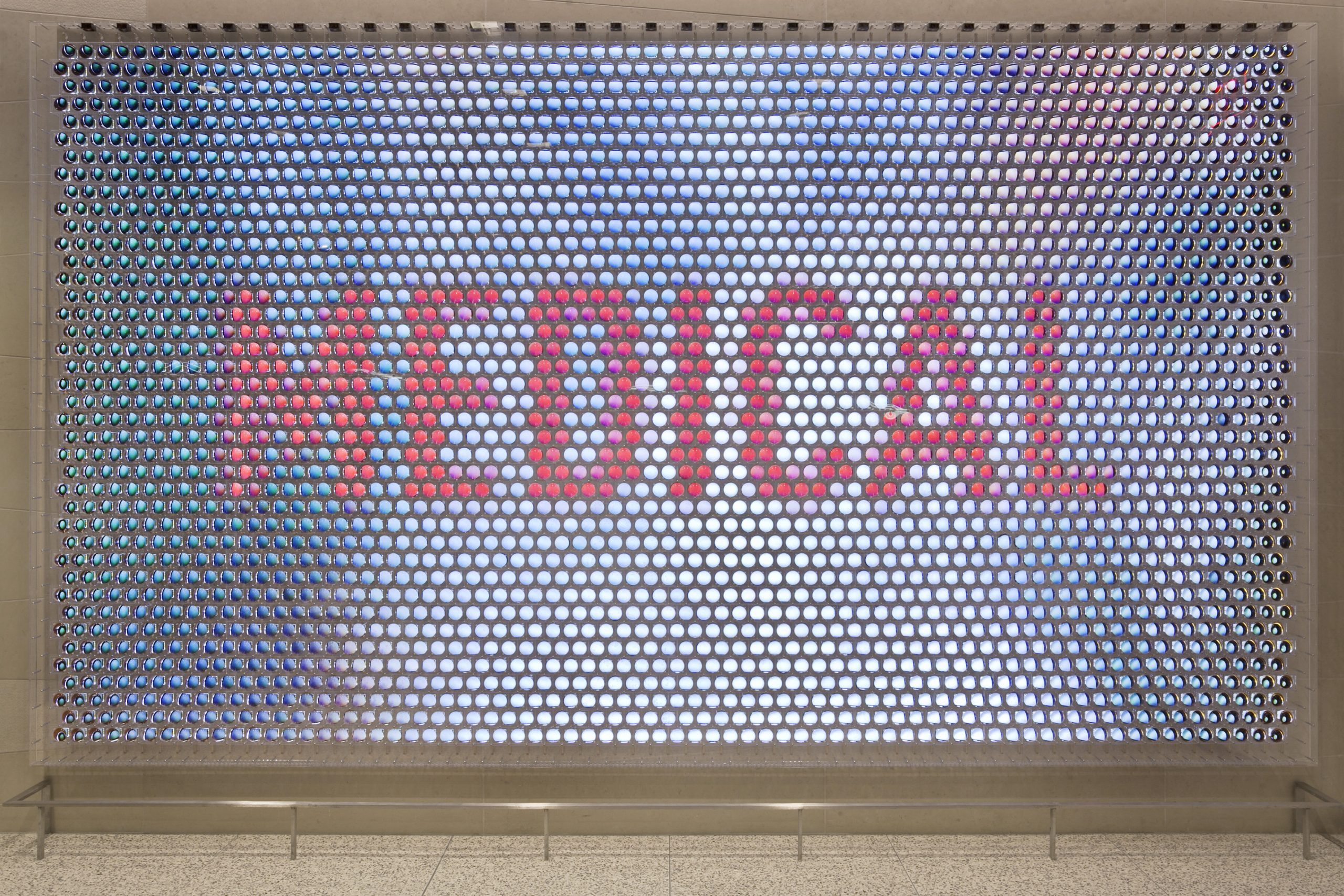
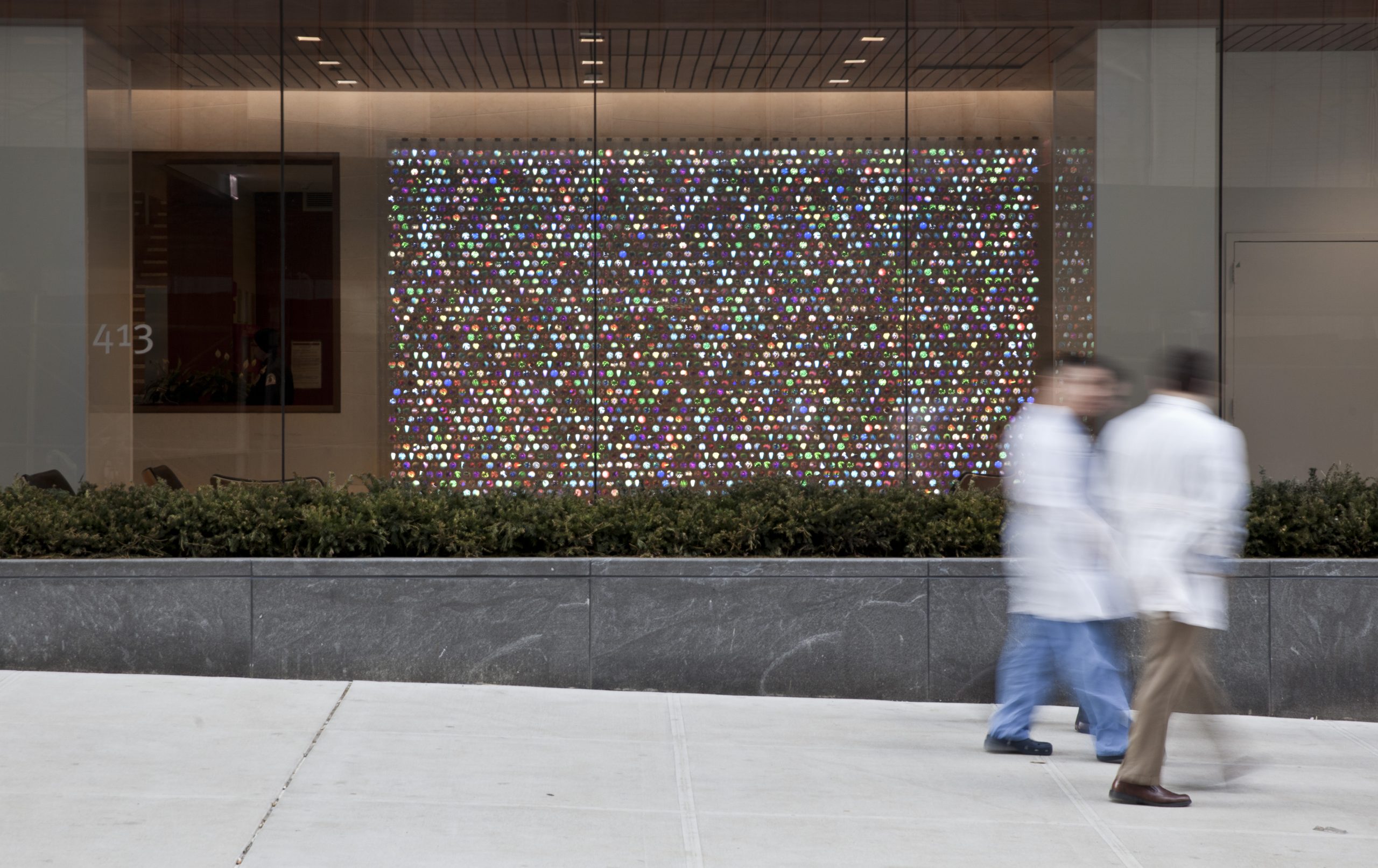
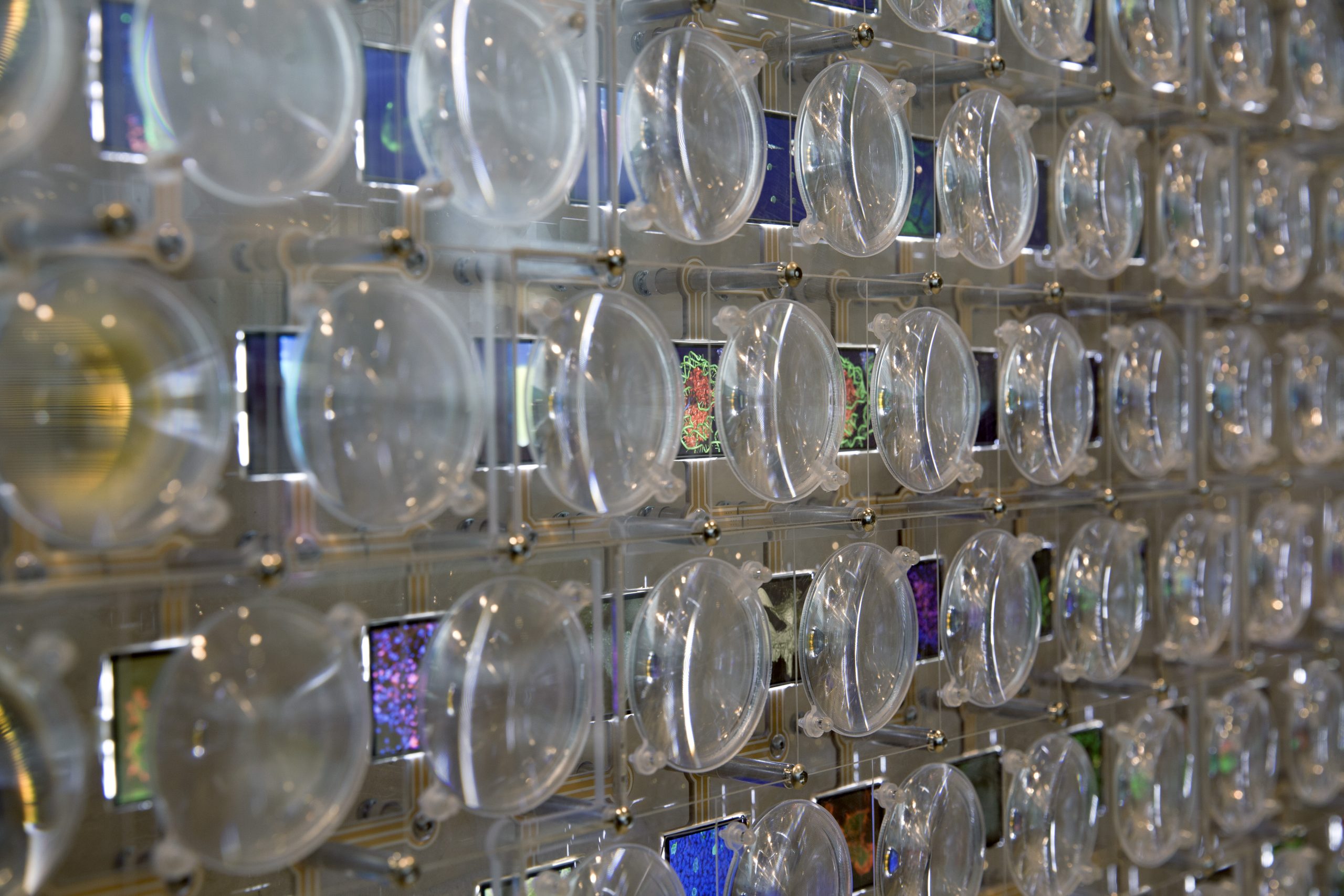
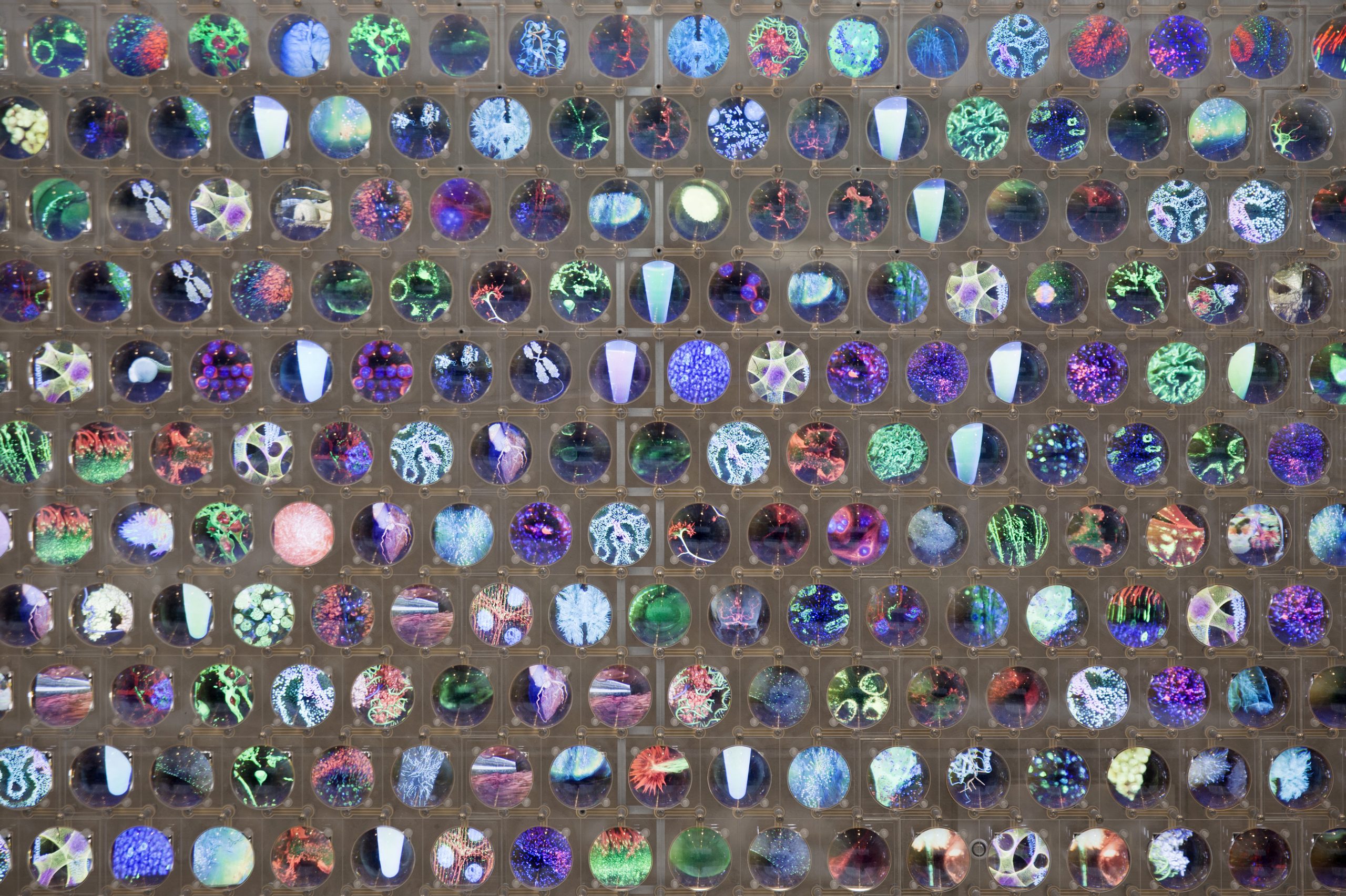
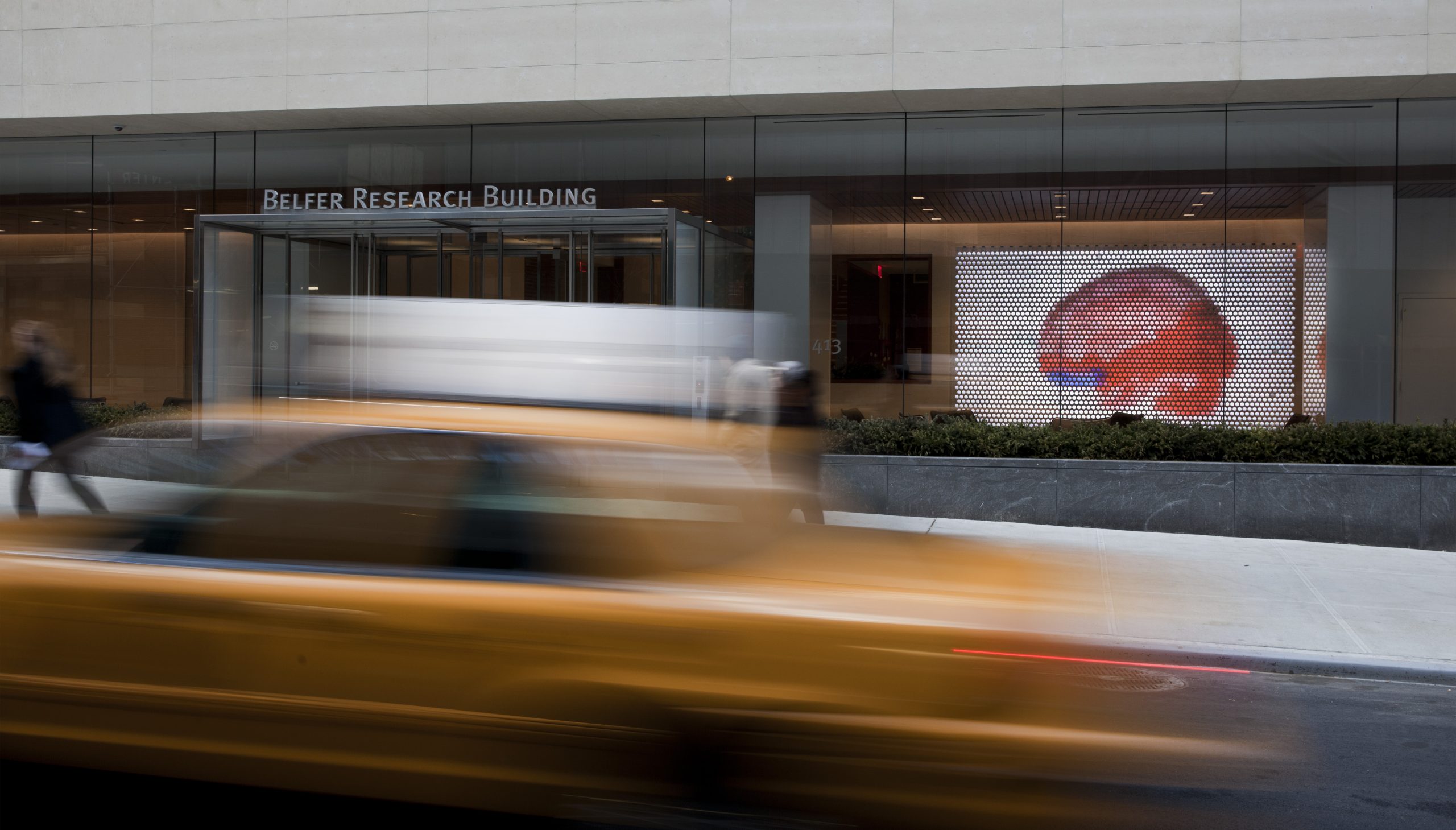
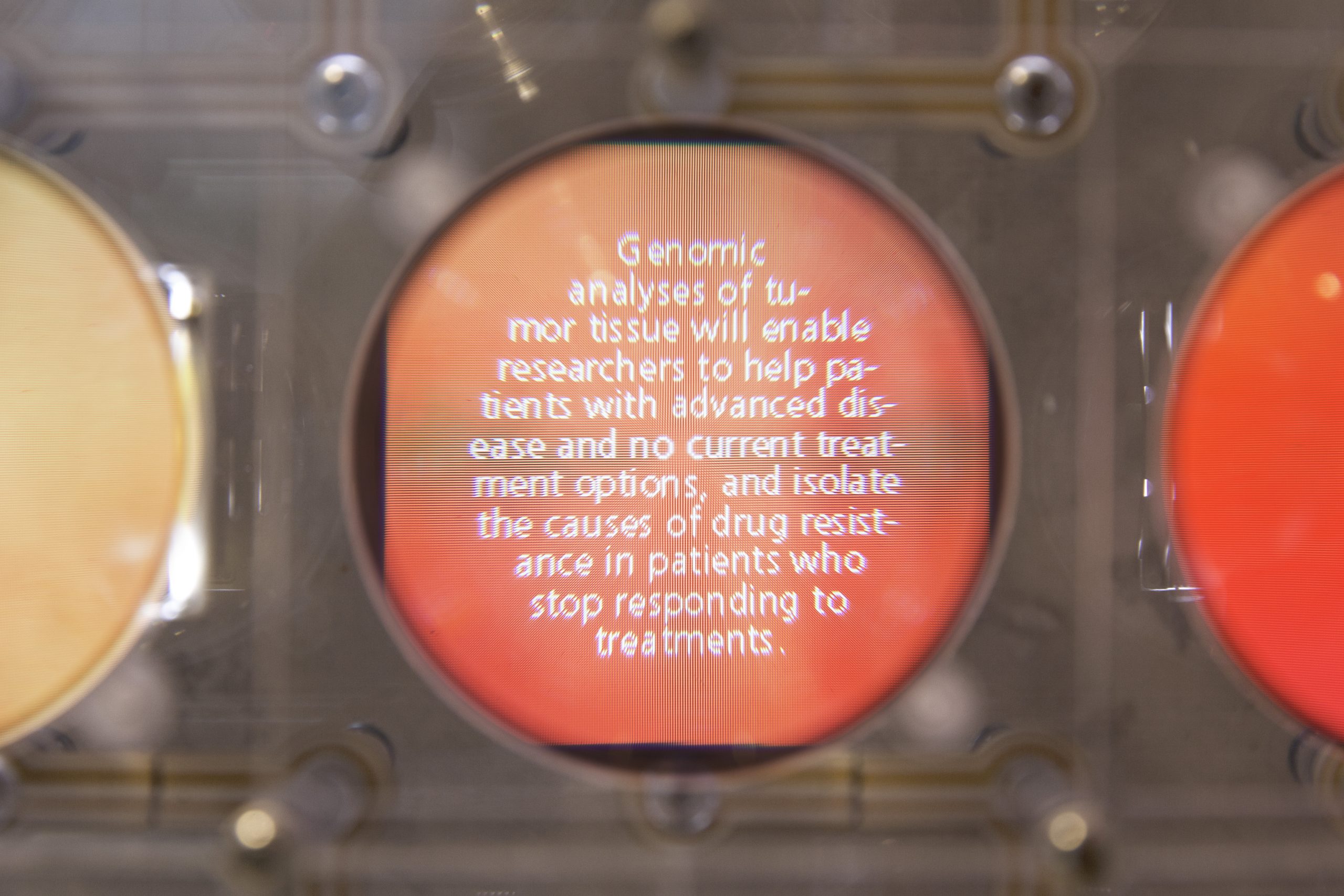
Client: Weill Cornell Medical College
Location: New York City, NY, United States
Completion date: 2014
Project Team
Artist
Squint/Opera
Squint/Opera
Industry Resource
Hirsch&Mann
Hirsch&Mann
Architect
Ennead Architects
Ennead Architects
Industry Resource
The Cross Kings
The Cross Kings
Industry Resource
Design Communications Limited
Design Communications Limited
Interior Designer
Ennead Architects
Overview
A wall-sized digital artwork created from thousands of tiny screens and lenses was designed by Squint/Opera in collaboration with Hirsch & Mann for the $650m Belfer Research Building in Manhattan, part of Weill Cornell Medical College (WCMC). The shimmering and animated foyer installation celebrates the college’s research work.
The large-scale digital installation (4.6m x 2.7m) is comprised of 2800 mini screens set in a grid pattern behind a panel of thousands of circular acrylic discs – a reference to the lenses used in medical research.
Goals
The goal of the installation was to celebrate the support of the building’s donors and promote the research and discoveries made in the building. In addition, it was designed as an intriguing and beautiful object to be viewed close up in the lobby or seen from outside the building as a single image. Each screen has information about medical discoveries and other news fed from WCMC’s website. The images and stories change constantly. Through the language of discovery passers-by are drawn in and encouraged to learn more.
The vision of New-York-based Ennead Architects, was to commission an artwork which would promote collaboration throughout the building and give a light touch to the interior fabric. To achieve this electronics were colour-matched with the stone cladding and circuit boards were mounted on a transparent frame. The clear acrylic lenses magnify the stonework at oblique angles and focus on the screens when facing the wall square on. This elegant approach compliments the natural feel of the building.
Process
During the commission Ennead Architects advised the client and briefed Squint/Opera to develop creative concepts. The concepts were delivered through a team of specialists brought together by Squint/Opera. Hirsch&Mann led the technology design, production and delivery, The Cross Kings led the physical detail design and fabrication in Boston was completed by Design Communications Limited.
Squint/Opera worked closely with Hirsch & Mann to design and build all components from scratch. This involved creating many prototypes which allowed the team to test ideas and communicate concepts to all stakeholders, taking them on the journey of developing a piece of art. The prototypes acted as a key discussion tool beyond drawings or presentations and allowed the team to refine the design and align with the architectural vision and the brief.
From the early stages Squint/Opera worked with Ennead Architects to ensure practical elements were successfully integrated within the building. This included provision of extractor fans, IT and AV conduits/storage, appropriate light levels and structural supports to ensure the artwork will remain a permanent homage to medical discovery.
Additional Information
Each screen is a reverse engineered LCD iPod nano screen, the resolution has been tested to ensure the screens can be read at the optimum image size at both a macro and micro levels. LCD screen resolution: 240 x 240 pixels Media wall macro resolution: 70 x 40 pixels Total media wall resolution: 16800 x 9600 pixels Power requirements: 1 KW (less than a standard heater) Lifespan: 10 years